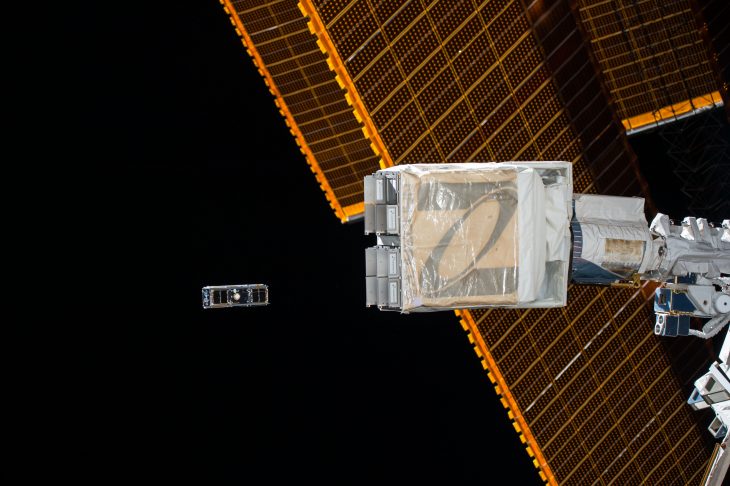Space Exploration Symposium 2017
FREE Public Talk - all are welcome!
No ticket or registration required
Thursday, Oct 5, 2017
7 p.m. in room 1-430
Centennial Centre for Interdisciplinary Science
University of Alberta

Chancellor's Professor Emeritus Hap McSween has been a member of the University of Tennessee faculty for four decades. He holds degrees from The Citadel, the University of Georgia, and Harvard University. He previously served as Head of the Department of Earth & Planetary Sciences and Interim Dean of the College of Arts & Sciences. He is a fellow of the American Academy of Arts and Sciences and the namesake for an asteroid, and his research has been recognized by awards from the Meteoritical Society, the National Academy of Sciences, and the American Geophysical Union. He is past president of the Geological Society of America.
Unlike most geologists, Dr. McSween's attention is drawn to rocks falling from the heavens rather than to those already underfoot. For nearly four decades NASA funded his research on meteorites, and he has published hundreds of scientific papers dealing with meteorites and their implications for understanding the formation and evolution of the solar system. He is also involved in spacecraft missions - currently as co-investigator for the Mars Exploration Rovers, the Mars Odyssey orbiter, and the Dawn asteroid orbiter. He is particularly interested in communicating the excitement of science to the public, and he is the author of three popular books on planetary science, as well as textbooks in geochemistry and cosmochemistry.
The Institute for Space Science, Exploration and Technology and
The Royal Astronomical Society of Canada Edmonton Centre
present
Conor Brown
Senior Mission Manager - NanoRacks, LLC
Keynote speaker
Launching Small Satellites to the International Space Station - An Industry Perspective
NanoRacks, a leader in commercial services on the International Space Station (ISS), has been deploying CubeSats from the ISS since 2012. It was not until February 2014, however, that the true impact of the ISS on the CubeSat market was realized. During this time, 33 CubeSats were deployed from the ISS via the NanoRacks CubeSat Deployer (NRCSD). This was unprecedented and created the ability to regularly deploy constellations of CubeSats into Low Earth Orbit (LEO). To date, NanoRacks has deployed a total of 174 CubeSats from the ISS and 12 CubeSats from Orbital-ATK's Cygnus resupply vehicle.
Since the first deployments via the NRCSD in 2014, NanoRacks has worked closely with NASA, JAXA, and Orbital-ATK to continue exploring options to increase the ISS Program's capabilities for small satellite deployments. Whether it has been optimizing the JEM airlock to increase overall throughput, finding ways to deploy satellites at an altitude higher than the ISS, or developing infrastructure to deploy satellites in the 100kg class, NanoRacks has been a market leader in utilizing the ISS to enable the small satellite market.
The accompanying presentation will offer an industry perspective on the role of the ISS in the small satellite industry, analyzing the launch and deployment process and how it differs from traditional launch services. A particular focus will be placed on how the increasing demand and agility inherent to the small satellite community is helping drive the commercial utilization of the ISS. Payload integration highlights and mission examples demonstrating rapid innovation cycles will be displayed.
FREE Public Talk - all are welcome!
No ticket or registration required
Wednesday, Oct 4, 2017
6 p.m. in room 8-207
Donadeo Innovation Centre for Engineering
University of Alberta

Conor Brown studied Chemical Engineering at Queen's University and has been a Senior Mission Manager at NanoRacks, LLC since January, 2014. During his time at NanoRacks, Conor has managed small satellite missions on over 14 launches and supported the development and qualification of a wide range of satellite deployment systems for use on the International Space Station (ISS) and resupply vehicles. Conor has served as the primary mission manager for a number of pivotal small satellite missions, including some of the first ever commercial CubeSat constellations (Planet and Spire), along with the QB50 ISS mission.
Hap McSween
University of Tennessee
Keynote Speaker

Asteroid Exploration by the Dawn Spacecraft
The Dawn spacecraft has been on an epic ten-year mission to explore the two most massive protoplanets-Vesta and Ceres. The two bodies are intact planetary building blocks that were never used, and they could not be more different. Vesta is a rocky body, well sampled by more than a thousand meteorites. It has been melted and differentiated, producing a large metal core, an ultramafic mantle, and a basaltic crust. Its surface is mostly covered by a regolith of broken fragments of basalt and ultramafic rocks. A huge impact basin ejected material that ultimately became meteorites. In contrast, Ceres contains a large quantity of ice. It too has been differentiated, producing an icy mantle. Although we have no meteorites from Ceres, heavily altered carbonaceous chondrites provide a reasonable analog. It is still active, with small volcanoes erupting brines that produce unusual salts. Asteroidal bodies like Vesta and Ceres likely accreted to form our own planet.

